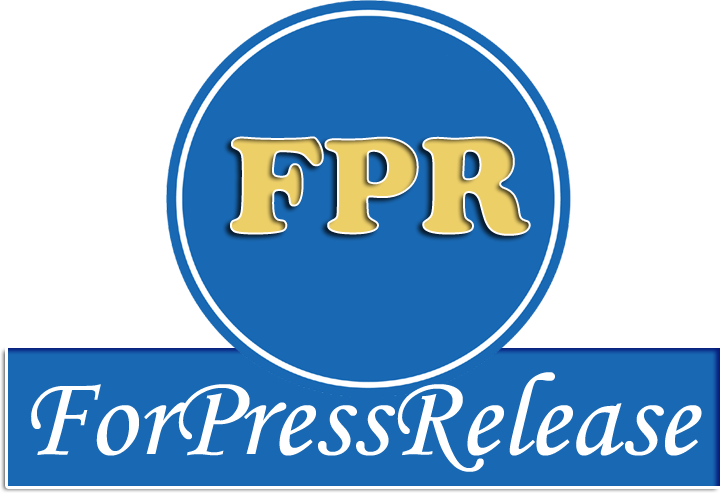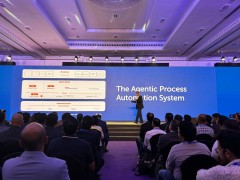Hot Press News
- Swiss Beauty Celebrates the Modern Bride with #SajDhajKe Campaign
- Hyatt Place Jaipur is offering exciting prices this winter season
- UK-based Private Investigators Launch Eye Witness Statement Services
- AISECT Learn introduces Skill Competency Certificate courses aimed at empowering 16 lakh youth by 2029
- FAN EXPO New Orleans Adds Seven ‘Back To The Future’ Guests For Franchise’s Largest Reunion Ever
- Women in Cloud and SHEQONOMI Empower 1 Billion Women Globally Through AI, Film, Podcasting & Leadership
- Bigul launches Execution Algos and Option Pair strategies' to optimise trading
- Sigdi chain of restaurants expands its footprint with the opening of new outlets in Anand, Gujarat, and Mira Road, Mumbai
- Kopyst Introduces Seamless Video Guide Creation: Resume and Capture Actions Without Missing a Beat!
- DataVare Launched New OFT to EML Converter to Convert Outlook OFT files to EML
- Tata CLiQ rebrands to Tata CLiQ Fashion, unveiling a vibrant new identity
- NEPCON Japan Gears Up for 2025: Spotlighting Japan’s Leadership in Global Electronics R&D and Manufacturing
- Automation Anywhere Shaping the Future of Enterprise Business Processes in India
- Bitdata Migration Launches PST Converter Tool to Simplify Data Migration for Outlook Users
- Ahlers & Ogletree's November 14th Estates & Collections Auction in Atlanta Featured 385 Lots
 Mail to a Friend Mail to a Friend |
|
     |
Strengthening Cybersecurity with Advanced User Access Controls for Businesses
2024-11-22 10:15:29
Technology
592
Businesses face ever-evolving cyber threats that target sensitive information, systems, and data. One of the most effective ways to mitigate these risks is by implementing advanced user access controls. With the user access control system in place, organisations can ensure that only authorized persons can access the data or specific resources. This helps in reducing or avoiding the data breach occurrences and insider threats. By strengthening cybersecurity with advanced access control methods, businesses can create a secure digital environment while maintaining operational efficiency.
The Importance of User Access Controls
User access controls serve as the first line of defense in cybersecurity. These systems ensure that employees, contractors, and other stakeholders can only access the data and systems necessary for their roles, limiting exposure to potential threats. Without robust access controls, businesses leave their data vulnerable to unauthorized users, which could result in data breaches, compromised intellectual property, or financial losses. If you want to understand more, look here for a user account provisioning definition.
Access control measures go beyond simply creating passwords for accounts. They encompass a range of practices and technologies, from password management and biometrics to role-based access control (RBAC) and multi-factor authentication (MFA). As cyberattacks grow more sophisticated, so must the strategies to defend against them, making advanced user access controls crucial for business cybersecurity.
Advanced User Access Control Methods
1. Multi-Factor Authentication (MFA)
Multi-factor authentication (MFA) is one of the most popular access control measures that strengthens security by requiring users to present two or more verification methods before accessing a system or data. This typically involves a combination of something like a password, and a user possession like a token, and something inherent to them (such as a fingerprint or facial recognition). By requiring multiple factors, MFA greatly reduces the likelihood of unauthorized access, as an intruder would need to compromise several layers of authentication to succeed.
2. Role-Based Access Control (RBAC)
There’s another essential aspect of user access management that is called the Role-based access control (RBAC). In RBAC, eac employee is assigned on the basis of their job responsibilities and which help determine their access privileges. This ensures that employees can only interact with the data and systems relevant to their work, reducing the risk of accidental or malicious access to sensitive information. For example, an HR employee may have access to employee records but not financial systems, while a finance manager can access the company’s accounting software but not personnel files.
3. Privileged Access Management (PAM)
Privileged access management (PAM) focuses on controlling and monitoring access to critical systems by users with elevated privileges, such as administrators or IT staff. PAM systems track and control what privileged users can do within a system, ensuring that any actions taken by these individuals are visible and auditable. By reducing the number of users with unrestricted access to sensitive data, businesses can minimize the chances of insider threats and ensure that privileged access is used appropriately.
4. Single Sign-On (SSO)
Single sign-on (SSO) is a method that enables users to access multiple applications using a single set of login credentials. The SSO method can reduce the number of passwords that employees may be using, making the login process easy and more managable. Besides it enhances the user experience, the SSO also improves security significantly by centralizing the process of user authentication and the access control. When integrated with multi-factor authentication (MFA), SSO provides a secure and efficient way to manage user access across an organization's digital platforms, making it easier to monitor and regulate user activities.
5. Biometric Authentication
In the biometric authentication process, a user’s identity is verified throgh his/her unique physical characteristics, which may include fingerprints, facial recognition, or retina scans. Biometric systems are highly secure as a user’s biometric identity is difficult to replicate. That’s why it is often considered as one of the most secure methods of access control. By integrating biometrics into their user access controls, businesses can prevent unauthorized access even if they have stolen passwords or credentials.
The Benefits of Advanced Access Controls
With the advanced user access control measures in place, businesses can remarkably enhance their cybersecurity game. These measures offer several key benefits:
1. Improved Security: Advanced access controls, particularly those using MFA and biometrics, reduce the likelihood of unauthorized access and strengthen defenses against phishing, password theft, and insider threats.
2. Regulatory Compliance: Many industries have stringent regulations regarding data security and user access. By adopting advanced access controls, businesses can ensure they comply with regulatory requirements, such as GDPR, HIPAA, and PCI-DSS, avoiding hefty fines and penalties.
3. Operational Efficiency: While advanced access controls may seem complex, they can streamline workflows and improve productivity. SSO and RBAC systems ensure that employees can access what they need quickly without compromising security, and MFA reduces the risk of account lockouts due to password issues.
4. Scalability: As businesses grow, so do their security needs. Advanced access controls are scalable, allowing companies to easily manage access for new employees, departments, or locations without compromising security.
Conclusion
In an age of growing cyber threats, businesses must prioritize cybersecurity by adopting advanced user access controls. Implementing methods like multi-factor authentication, role-based access control, privileged access management, and biometric authentication can greatly reduce the risk of unwanted access and data breaches. These advanced controls provide businesses with a secure foundation, ensuring that sensitive information remains protected and that regulatory requirements are met.
By taking a proactive approach to user access management, businesses can protect their digital assets while maintaining operational efficiency and building trust with clients and partners.




_thumb.jpg)






